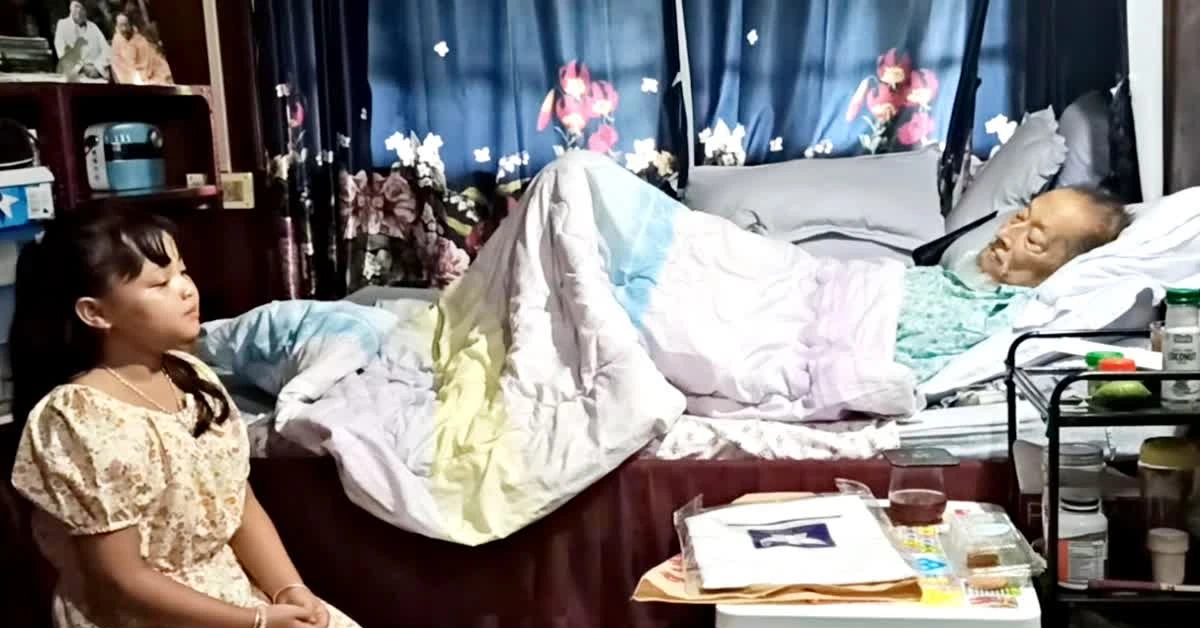
In a moment steeped in emotion and symbolism, young Gunchenbi from Manipur, daughter of a classical dancer and a folk singer, offered a deeply moving musical tribute to her ailing mentor, the legendary theatre maestro Ratan Thiyam.
Her renditions of Rabindranath Tagore’s timeless compositions, “Ore Grihobashi” and “Bela Boye Jay,” carried not just melody but memory—bridging generations, cultures, and artistic traditions in a way few moments can.
This tender act unfolded just days before Ratan Thiyam passed away on July 23, 2025, aged 77, after a prolonged illness.
Gunchenbi’s performance beside her mentor was not just a farewell—it was a passing of the torch.
Her choice of Tagore’s music was particularly poignant. Tagore, like Thiyam, was a cultural unifier—a poet and philosopher whose vision transcended borders and whose patronage helped bring Manipuri dance into wider recognition
By singing his compositions, Gunchenbi echoed a legacy of shared cultural reverence and artistic synthesis.
The tribute was intimate yet expansive. The image of a young girl seated beside her fading guru, singing songs rooted in Bengali literature from a corner of north-eastern India, symbolised the very spirit of Indian cultural unity.
It showed how traditions evolve, not in isolation, but through continuous exchange—between mentor and student, between different regions, and between classical and contemporary forms.
In the wake of Ratan Thiyam’s passing, tributes poured in from every corner of the artistic world. Yet perhaps none captured the emotional weight of his influence as simply and powerfully as the voice of a child honouring him through song
It was an act that needed no language to be understood. It was not performance—it was devotion.
Gunchenbi’s tribute is a reminder that the greatest legacies are not etched in stone, but carried forward in voice, memory, and spirit.
Her song was more than a farewell—it was a promise. A promise that the stories, sounds, and soul of Indian theatre will live on in new voices, shaped by old wisdom and driven by the same love that once inspired a titan named Ratan Thiyam.
A colossus of Indian theatre, Thiyam was a seminal figure in the post-independence “Theatre of Roots” movement, which sought to decolonise Indian theatre and root its identity in indigenous forms.
Born in Nabadwip, West Bengal, to renowned Manipuri dancers, Thiyam's spiritual and artistic home was always Manipur—his "tortured, mesmerising muse".
In 1976, he founded the Imphal-based Chorus Repertory Theatre, a space that would grow into a global beacon for Indian experimental theatre.
His productions were known for their visual splendour, tightly choreographed movement, and philosophical depth, drawing influence from the Natya Shastra, ancient Greek tragedy, Japanese Noh theatre, and traditional Meitei forms like Wari Liba (storytelling), Thang-Ta (martial arts), and Pung (Manipuri drumming).
Works such as “Chakravyuha” and “Urubhangam” are today regarded as modern masterpieces.
Ratan Thiyam was not merely a director—he was a complete theatre artist. His contributions spanned playwriting, music composition, set design, choreography, and even architecture.
His iconic theatre space, “The Shrine,” built with deep symbolic resonance, reflects his belief in theatre as a sacred space of reflection and transformation.
His accolades included the Padma Shri, the Sangeet Natak Akademi Award, and a Lifetime Achievement Award from the Government of Manipur.
He also served as Director and Chairperson of the National School of Drama, shaping generations of performers and storytellers.
ALSO READ | Renowned Indian Theatre Maestro Ratan Thiyam Dies At 77
The Story Mug is a Guwahati-based Blogzine. Here, we believe in doing stories beyond the normal.